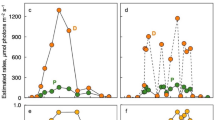Photosynthetic organisms in natural environments are challenged by exposure to changing light intensities and stress conditions. The balance point between efficient light harvesting and potential photodamage is fine and dependent upon changing environmental conditions and metabolic demands. Plants appear to have developed numerous mechanisms that allow them to fine tune the absorption of light energy, its distribution between the photosystems, and the amount safely dissipated as heat. Much of the research into mechanisms controlling the use of absorbed excitation energy by photosynthetic organisms depends on the measurement and analysis of chlorophyll a (Chi a) fluorescence. The emission of variable Chi a fluorescence is dependent on excited state processes and photochemical activities of Photosystem II (PS II) and is thus a potentially powerful probe in studies of the regulation of PS II activity. Quenching of fluorescence is associated with down regulation of PS II, and the analysis of fluorescence quenching is often used to elucidate details of the mechanisms responsible. There are however, a number of different techniques for the measurement, quantification and analysis of fluorescence emission whose strengths and weaknesses must be considered before they can be effectively applied to studies of the down regulation of PS II. In this chapter, we briefly discuss a few popular fluorescence measuring techniques and models for the origin of fluorescence from PS II in the context of fluorescence quenching analysis. We then look at proposed molecular mechanisms for a number of fluorescence quenching processes. We focus on a few relatively short-term reversible quenching mechanisms responsible for energy dissipation and/or regulation of the distribution of excitation energy between PS II and PS I. These include high energy or ApH quenching (qE) and state transition mechanisms in plants, algae and cyanobacteria. A variety of molecular mechanisms for fluorescence quenching associated with qE and state transitions are compared and discussed with respect to how fluorescence is measured and analyzed.
Access this chapter
Tax calculation will be finalised at checkout
Purchases are for personal use only
Preview
Unable to display preview. Download preview PDF.
Similar content being viewed by others
Author information
Authors and Affiliations
Editor information
Editors and Affiliations
Rights and permissions
Copyright information
© 2004 Springer
About this chapter
Cite this chapter
Bruce, D., Vasil’ev, S. (2004). Excess Light Stress: Multiple Dissipative Processes of Excess Excitation. In: Papageorgiou, G.C., Govindjee (eds) Chlorophyll a Fluorescence. Advances in Photosynthesis and Respiration, vol 19. Springer, Dordrecht. https://doi.org/10.1007/978-1-4020-3218-9_19
Download citation
DOI: https://doi.org/10.1007/978-1-4020-3218-9_19
Publisher Name: Springer, Dordrecht
Print ISBN: 978-1-4020-3217-2
Online ISBN: 978-1-4020-3218-9
eBook Packages: Springer Book Archive



